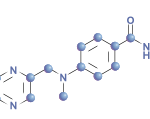At 21 weeks of follow-up, both intervention groups had significantly increased their number of steps and also demonstrated statistically significant improvement in fatigue as rated by the Patient-Reported Outcomes Measurement Information System seven-item questionnaire.3 Dr. Ormseth used this study to illustrate the potential role for increased exercise in addressing symptoms of fatigue in patients with rheumatoid arthritis.
Tofacitinib & Cardiovascular Disease
In the third case, a 70-year-old man with seropositive rheumatoid arthritis and a significant history of cardiovascular disease is described as having ongoing disease activity despite subcutaneous methotrexate at full dose. When considering additional treatment options, Dr. Ormseth noted that tofacitinib would be among the riskier choices for this patient.
This is based on the ORAL Surveillance study, in which patients aged 50 and older with moderate to severe RA, one or more cardiac risk factors and inadequate response to methotrexate were divided into one of three clinical arms: 5 mg of tofacitinib given twice daily plus methotrexate, 10 mg of tofacitinib given twice daily plus methotrexate (after the drug safety monitoring review, this dose was lowered to 5 mg given twice daily) or a tumor necrosis factor-α (TNF) inhibitor plus methotrexate.4
The study demonstrated that tofacitinib combined with methotrexate was not non-inferior to TNF inhibitors plus methotrexate. The number needed to harm for major adverse cardiac events over one year was 567 for 5 mg of tofacitinib twice daily and 319 for 10 mg of tofacitinib twice daily.4 Independent risk factors for major adverse cardiac events included current smoking, aspirin use, being 65 years or older and being male. In addition, the highest rates of major adverse cardiac events were seen in patients with coronary artery disease and in patients with a high risk of major adverse cardiac events based on traditional risk factors.5 Dr. Ormseth summarized these findings in the form of a clinical pearl that states how tofacitinib should generally be avoided in patients with cardiovascular disease.
RA & Hepatitis B
The fourth case was of a 44-year-old woman with seropositive, erosive rheumatoid arthritis who has been treated with methotrexate and sulfasalazine but has not been able to tolerate increased doses of these medications and has high disease activity. On lab studies, she is found to have a history of hepatitis B infection.
Using the 2021 ACR guideline, Dr. Ormseth explained that prophylactic antiviral therapy is strongly recommended over frequent monitoring alone for patients who are positive for hepatitis B core antibody and are planning on initiating rituximab.1 In addition, for patients with evidence of chronic hepatitis B infection (i.e., hepatitis B core antibody positive and hepatitis B surface antigen positive), prophylactic antiviral therapy is strongly recommended over frequent monitoring alone prior to starting biologic disease-modifying anti-rheumatic drugs (bDMARDs) or targeted synthetic DMARDs (tsDMARDs).

